How to Create Unique Resin Jewelry: Tips and Techniques

Introduction
Table of Contents
Resin jewelry has become a standout trend in the DIY and handmade markets. The popularity of resin jewelry has risen because it enables users to achieve versatility through creative freedom. Resin jewelry allows artisans and hobbyists alike to craft unique, one-of-a-kind pieces that reflect personal style and creativity. From pendants to bracelets, earrings to keychains, resin is the perfect medium for those looking to make jewelry with resin that is both beautiful and highly customizable.
The beauty of resin jewelry lies in its adaptability. Artists can develop individual pieces of jewelry by combining resin with diverse elements, especially dried flowers and artistic pigments. The design possibilities are virtually endless, which is why so many people are drawn to jewelry making with resin. Whether you’re looking to craft a resin necklace, a resin bracelet, or create intricate resin charms for jewelry making, there is always room for innovation and personal expression. In this article,
we will guide you through the process of creating resin jewelry, from selecting the right materials to applying helpful techniques that will elevate your pieces. We will cover everything you need to know to get started, including the essential tools and supplies, step-by-step instructions for crafting jewelry, and expert tips to ensure your resin jewelry is as stunning and unique as you envision.
Materials You’ll Need for Resin Jewelry
Before diving into the process of making resin jewelry, it’s essential to gather all the necessary materials. Here’s a list of what you’ll need to begin creating your resin masterpieces:
- Epoxy Resin The core component of resin jewelry is epoxy resin, a two-part substance that, when mixed with a hardener, transforms into a solid, durable material. Epoxy resin provides the clarity, strength, and glossy finish that makes resin jewelry so desirable. However, is resin a good material for jewelry? Absolutely. It’s strong, clear, and versatile, making it perfect for a variety of jewelry pieces, from resin bangles to intricate resin pendants.
- Molds Molds are an essential part of the resin jewelry-making process. You can find various molds to create resin necklaces, bracelets, or keyring resin designs. Different types of jewelry remain possible to create with the wide selection of molds available in various shapes and sizes. If you are making a resin chain or a resin necklace, look for molds designed to fit your vision.
- Resin Jewelry Making Kit: For beginners, a resin jewelry making kit is a great option. The resin kits come bundled with all the required materials, which include the main elements of resin, hardener, molds, and tools. They’re ideal for those just getting started in jewelry making with resin, as they provide a simple and convenient way to begin crafting resin jewelry.
- Inclusions and Additives One of the things that make resin jewelry unique is the ability to add inclusions. These can be anything from dried flowers and glitter to tiny charms or even words (keyed resin with words). You can also experiment with resin fabric, which adds an interesting texture to the final piece. Your creativity sets no boundaries regarding how you can customize your designs.
- Mixing Tools and Safety Gear The proper mixing of resin and hardener requires mixing cups and sticks, according to the recommended instructions. It is crucial to maintain two factors during resin work: wear protective gloves and select a well-ventilated workspace for protection.
You may also learn How To Make Resin Jewelry: A Beginner-Friendly Guide For Stunning DIY Accessories
Step-by-Step Guide to Making Resin Jewelry
Now that you have your materials ready, let’s break down the steps to make beautiful resin jewelry.
- Prepare Your Workspace: Set a flat, clean working space before beginning your work. The workspace requires disposable plastic sheets or wax paper as a covering to catch any accidental spills. Ensure your workspace is free from dust and debris, as these can affect the clarity of your resin jewelry.
- Mix the Resin and Hardener: Different brands of resin products require specific mixing ratios according to their packaging instructions. Mixing resin with hardener requires you to follow the standard ratio of one part to another. Stir the two parts of the mixture together at a gentle speed for a period of several minutes until they completely blend together. Strong mixing skills will eliminate air bubbles, which lead to a superior smooth final finish.
- Add Color or Pigment: You should perform resin color addition at this moment. The completion of your desired look depends on the resin dyes or pigments you choose to add, along with the metallic powders you select. You can choose to make your resin jewelry in a single color or create a marbled effect with different shades.
- Pour the Resin Into Molds: Slowly transfer your mixture from the container into the prepared molding cavities. If you’re making a resin necklace, a resin bracelet, or a resin bangle, make sure to fill the molds evenly without overfilling them. Cure each batch independently by working through multiple molds in order to avoid waste and rushing the curing time.
- Add Inclusions: This is where the fun begins. Your resin will accept different types of inclusions, consisting of dried flowers combined with glitter and small objects. If you’re making a resin keychain, you can also embed small charms, photos, or even handwritten words (key resin with words) to give it a personal touch.
- Allow the Resin to Cure: The resin requires a curing duration of 24 to 48 hours before it achieves completion after pouring and decoration of your chosen inclusions. After the passage of 24 to 48 hours, the resin material solidifies into a robust and reflective product. Carefully avoid touching the pieces that need to cure.
- Remove and Finish After your resin jewelry has cured, carefully remove it from the mold. The final finish smoothing depends on the mold format, as some designs might require edge sanding before the final outcome. If you’re making a resin necklace or bracelet, attach any chains or clasps to complete the piece.
Tips and Techniques for Creating Stunning Resin Jewelry
Creating unique and beautiful resin jewelry is all about experimenting with techniques and being creative. Several professional tips exist that can help you improve your resin design process:
- Avoid Air Bubbles Coping with air bubbles is a known problem that occurs during resin-based work. The creation of air bubbles becomes minimal when you mix resin at a slow pace and execute mold fills with caution. When bubbles appear after resin pouring, you should use a heat gun or small torch to remove them.
- Experiment with Layers To achieve a three-dimensional result, you should start by applying successive resin layers that must completely cure before adding another. This method works especially well for creating depth and texture in your resin jewelry, such as in resin bangles or pendants.
- Use Resin Fabric Resin fabric can be a fantastic addition to your jewelry designs. The unique look that resin fabric provides to jewelry pieces becomes impossible to replicate using resin by itself. You should select colorful or patterned fabric to create stand-out jewelry pieces.
- Personalize Your Pieces One of the best things about resin jewelry is that it can be deeply personal. Whether you’re creating a resin necklace with a meaningful charm or a keyring resin piece with words, take advantage of the opportunity to make your designs as personal and unique as possible.
- Work in Small Batches If you’re new to resin jewelry making, start with small batches. The small portions help you practice resin techniques so you can avoid wasting excess material.
Is Resin Jewelry Safe to Wear?
A common concern among resin jewelry makers is whether resin jewelry is safe to wear. The good news is that, when handled properly, resin jewelry is safe for everyday use. Resin jewelry needs to complete its entire curing process before you put it on, because unfinished resin might cause both discomfort and allergic skin reactions. You should purchase high-quality resin products created for jewelry-making, because their exclusive design ensures secure functionality and long-lasting performance of your creations.
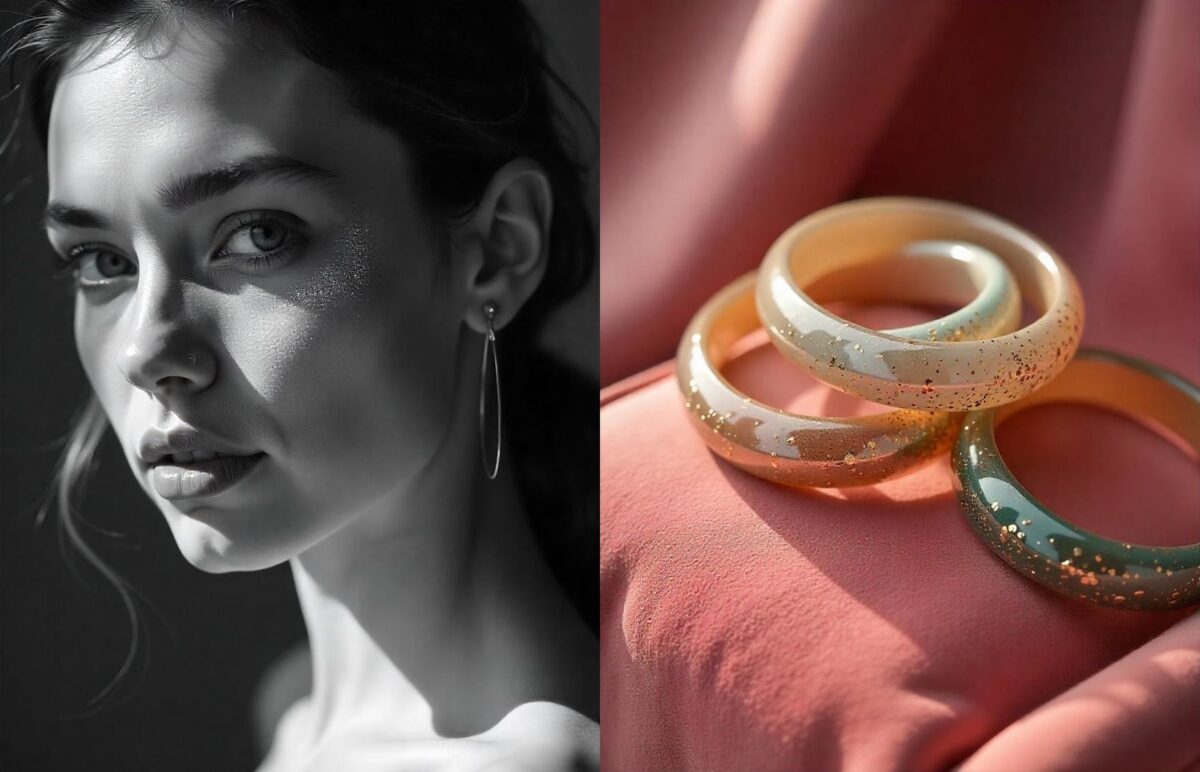
II. What Is Resin Jewelry?
Resin jewelry is a versatile and increasingly popular medium in the world of crafting and jewelry making. Resin enables beginner hobbyists and established crafters to design unique, personalized items through their combination of resin with colors, flowers, beads, and fabric inclusions. The shiny, clear quality of resin stands out as one leading reason why this material has experienced growing popularity in customized jewelry markets.
Epoxy Resin vs. UV Resin
When it comes to resin jewelry, there are two main types of resin that are commonly used: epoxy resin and UV resin. Knowing the specific qualities between these two types of resin will guide your selection for jewelry creation.
- Epoxy Resin:The application of epoxy resin requires combining a hardener with its two-part resin solution. After combination, the material produces a solid and smooth transparent surface, which produces durable jewelry objects with longevity. One of the key benefits of epoxy resin is its versatility and strength, making it ideal for larger jewelry projects, such as resin bracelets, rings, and even pendants. Users must consider the extended curing times of 24 to 48 hours before choosing epoxy resin, as this chemical requires sufficient planning.
- UV Resin: UV Resin requires only a single component to cure because it reacts to UV light exposure. UV resin serves crafters on smaller scales by using molds or for speedy curing periods that take 1-5 minutes with lamp-based UV light exposure. UV resin delivers both convenience through fast projects and provides an identical high-gloss appearance to epoxy resin. It is often used for delicate pieces, such as resin charms for jewelry making or small accents like keyring resin designs. The application of UV resin results in lower durability when used for larger objects compared to epoxy resin.
Why Resin Jewelry Is a Crafter’s Favorite
Resin is now popular among jewelers because it offers exceptional durability and clarity, along with wide material flexibility.
- Durability:Once cured, resin forms a strong, hard surface that is resistant to scratches and damage, ensuring that your handmade resin jewelry will last for years. This durability makes resin an excellent material for everyday wear, especially for pieces like resin bracelets or rings that endure frequent contact.
- Clarity:The best characteristic of resin material is its transparent quality with a glossy finish. This makes it perfect for showcasing inclusions, such as dried flowers, glitter, or even key resin with words. Through its clear state, resin lets embedded elements show as stunning and unique visual designs.
- Versatility: Recipients gain freedom to create any design through the moldable nature of resin combined with multiple additional materials. Whether you want to create simple, minimalist resin pendants or intricate resin bangles with detailed patterns, the possibilities are endless. You can achieve custom jewelry with resin by simply adding dyes and pigments and metallic powder to this material. It also works beautifully with other materials, such as resin fabric, to add texture and dimension to your designs.
Types of Resin Jewelry You Can Create
The creative potential for resin jewelry is vast, and you can make a wide variety of jewelry pieces using resin as your medium. Here are some popular types of resin jewelry:
- Pendants:Resin pendants are one of the most popular types of resin jewelry. You need special resin molds to produce the desired shapes of various designs, such as hearts and geometric or nature-inspired motifs. Users can create special resin pendants by enclosing dried flowers alongside tiny gemstones or glittering materials.
- Earrings:Resin earrings provide unlimited design choices, while also staying lightweight and flexible for customization. You can manufacture resin earrings in different size ranges, from tiny studs to expressively dominating statement pieces. Resin charms for jewelry making, when added to earrings, can make them even more unique.
- Rings:People frequently choose resin rings as their preferred means of creating fashionable art pieces that can be worn. You can create outstanding statement rings with attractive elements and variations by pouring resin into ring-shaped molds. Some crafters use resin with fabric or metallic pigments to make the rings even more eye-catching.
- Bracelets:Resin bracelets can be made in a variety of styles, from bangles to cuffs. The adaptable nature of the resin material enables users to create hard, chunky bracelets as well as delicate, structured wristbands. The plastic nature of resin also enables both polished and decorative ring designs, as it allows you to create anything from subtle to visually striking resin pieces.
- Keychains: Resin keychains, often personalized with resin keys featuring words or images, are small but charming items that can be crafted with a variety of molds and designs. This method provides artists with an ideal environment to explore different colors and inclusions during the creation process of usable artistic items.
You also learn from this Useful Article
The Art of Crafting Beautiful Resin Jewelry: A Comprehensive Guide
Tips for molds, pigments, workspace safety, mixing tools, and finishing techniques.
III. Essential Materials and Tools
Before diving into the creative process, let’s go over the essential materials and tools you’ll need to start crafting your own unique resin jewelry. Whether you’re a curious beginner or a crafty enthusiast, having the right setup makes a huge difference in achieving beautiful, professional-looking results.
Basic Supplies You’ll Need
To begin, gather the following fundamental items. These are your building blocks for any piece—whether you’re crafting a delicate pendant or a bold resin chain.
- Resin (Epoxy or UV):The central component that defines your project is located here. Both epoxy resin work best for beginners because it can tolerate delays without issues, yet UV resin provides speedy curing when exposed to UV light.
- Hardener (for Epoxy Resin):A hardener is essential because epoxy resin needs this ingredient to initiate its chemical reaction, which converts the liquid state into a solid material.
- Silicone Molds:These flexible molds come in various shapes and sizes, allowing you to create everything from rings to an elegant epoxy resin pendant.
- Mixing Cups and Sticks:Precision is crucial here. You need clean mixing tools to achieve the appropriate blending between resin and hardener substances. Choose either single-use or reusable tools to mix resin, as non-porous materials will provide the best results.
- Gloves and Safety Gear:Putting on gloves is necessary because resin can cause skin irritation from its stickiness. A suitable ventilated environment combined with protective face covering masks are essential safety measures for resin work.
- Color Pigments and Dyes:You can personalize your projects by adding shine with mica powders, as well as alcohol inks and liquid dyes. When it comes to creativity, there are countless options, and trying different things forms the exciting part of the process.
- Embellishments:Your true creativity comes forward at this point. Each piece stands out when featuring dried flowers combined with glitters, charms, and small beads for decoration.
- Toothpicks/Tweezers:These tiny tools have incredible strength because they permit detailed item placement and eliminate tough air bubbles during curing.
- Sandpaper and Polishing Tools:The curing process finishes with sanding, which removes uneven edges, until you polish for a shiny gloss finish.
- UV Lamp (if using UV Resin): A UV lamp serves as the key tool to cure UV resin in a uniform and speedy manner. Ensure the lamp operates with a wattage that suits your resin type to achieve the optimal results.
Optional But Handy Add-ons
Although unnecessary for the process, you will still benefit from these add-ons, which enhance both the final result and project efficiency:
- Heat Gun or Torch: A heat gun or torch serves to carefully eliminate bubbles that appear after resin pouring.
- Resin Drill: The instrument functions well when you need to create small holes in pendants or earrings before stringing them.
- Gold or Silver Flakes: The addition of gold or silver flakes provides a luxurious sparkle effect that transparent resin beautifully complements.
- Measuring Scale: A measuring scale enables you to achieve extremely precise measurements of resin-to-hardener mixing ratios.
- Non-Stick Work Mat: Your workspace stays clutter-free because this tool effectively controls resin spillage.
Quality tools, as well as enjoyment in your jewelry making project, stem from having adequate equipment. Whether you’re dreaming up a pair of statement earrings or a beautiful resin necklace, a well-prepared toolkit is your best friend.
VI. Step-by-Step Guide to Creating Resin Jewelry
Crafting resin jewelry is not only fun but incredibly rewarding. Through this step-by-step guide, you will receive instructions about the entire process, whether you plan to make gifts for family members or intend to market your work. Your vision will come to life with our safe and confident process that brings results of exceptional beauty.
Prepare Your Workspace
A safe workspace must be established before you pour any resin. Your area needs to be organized with a clean surface.
- Ventilation is Key:The curing process makes resin release dangerous fumes into the surrounding environment. To obtain circulation of fresh air, set up your work by a window or run a fan in your work environment.
- Gear Up:Wear gloves to shield your skin, in addition to having a protective mask when working with strong pigments or alcohol ink materials. Safety glasses serve as a critical safety element, particularly because they protect you when sanding.
The focus on creativity will be stronger when you work on an organized workspace that provides proper ventilation.
Mixing the Resin
This is a critical step. Precision matters here.
- Measure Carefully:Conduct resin and hardener mixing according to the product specifications. Always refer to the product instructions for the specific mixing ratio of epoxy, as it typically follows a 1:1 ratio but may vary per product.
- Mix Slowly and Steadily:The mixing procedures should move at a slow pace to decrease the formation of air bubbles. When mixing resin with haste, it creates aggressive movement that entraps air, leading to cloudy final results.
- Let it Rest (Optional):The mixing process should be followed by a two-minute waiting time for bubbles to surface and dissolve.
If you’re using a resin jewelry-making kit, many of these materials will be pre-measured or come with clear guidelines, making your life even easier.
Adding Colors and Embellishments
Now the real creativity takes center stage in order to personalize your project.
- Mica Powders & Inks:Mica powders, along with inks, can create shimmering effects like dreams, but also generate deep, flowing colors through alcohol inks. You should begin with minimum amounts of content, as additional quantities are feasible at any time.
- Dried Flowers, Glitter, Charms:These add dimension and character. You will need tweezers for exact positioning, and you should consider the stacking method when working with your mold.
- Don’t Overload:
- The excessive addition of materials will negatively affect both curing quality and mold compatibility.
Pouring Into Molds
Move forward with mold-filling operations to create your work of art.
- Layer with Purpose:Multi-element layers will require purposeful pouring techniques, where you add clear resin first, followed by design elements, and finish with tinted resin.
- Watch the Edges:Maintain proper mold filling by stopping at the top level without exceeding it. Resin that pours over the mold causes both messy cleanup and material waste.
- Remove Air Bubbles:You can easily deal with surface bubbles during the process by employing a toothpick and heat gun or simply flashing your lighter flame above them.
Curing the Resin
Curing plays a crucial role in transforming the liquid into a solid substance.
- Epoxy Resin:Epoxy resin needs 24–72 hours at standard room conditions and with appropriate thickness for complete solidification.
- UV Resin:The curing process of UV resin takes short minutes with appropriate UV lamp equipment, but requires a combination of thin resin layers and transparent or light-colored tints.
- Avoid Mistakes:It is essential to avoid all contact with your piece throughout the curing time. Finishes with gloss remain damaged when particles of dust and finger marks settle on them.
Deliberate patience during this period is vital, as impatience results in adhesive and uneven concoctions.
Demolding and Finishing
After complete curing, you can reveal your creative work.
- Demold with Care:Bend the silicone mold gently to allow your piece to slip out. The mold is resistant to releasing, so you should wait longer before attempting another removal.
- Sanding:Rough edges and overflows should be smoothed by applying fine-grit sandpaper.
- Polishing & Doming:You can achieve a glass-like shine by buffing with a polishing cloth and adding a doming layer of resin.
If you’re aiming for high-quality handmade resin jewelry, this stage is crucial—it’s all about those finishing touches.
Adding Jewelry Findings
You have a stunning piece of artwork that now needs certain additions for wearable use.
- Attach Findings: Attach these pieces together for pendant design using jump rings, considering hooks and bracelets for structure or keychain construction.
- Strong Connections: Select metals with longevity that will preserve their untarnished state and maintain their new appearance and longevity.
- Seal if Needed: A protective clear coat application by artists helps to maintain both shine and surface protection.
When you choose to work with resin, you create more than art – you generate an item that becomes a cherished wearable accessory.
Also read useful this Guide about 7 Tips for Perfecting Your Resin Jewelry Designs

V. Tips for Creating Unique Designs
You should apply your gained basic knowledge to start expressing yourself creatively. The beauty of resin jewelry lies in its versatility – no two pieces have to look alike unless you want them to. Some effective guidelines will guide you through the creation of exceptional designs that will appeal to everyone.
Play with Textures and Colors
Creating different combinations should not intimidate you. Your jewelry design will gain exceptional visual character when you unite glossy smooth resin with textured elements such as sand and crushed shells along with metallic foil.
- Layering Colors:Add different colored resin by making patterns that include swirls alongside gradients and abstract forms. The combination of transparent resin with a single solid-colored splash produces exquisitely modern results.
- Experiment with Opacity:The combination of clear resin and opaque pigments or translucent dyes will lead you to dreamlike depth when designing.
Creating with resin fabric—small pieces of flexible, cured resin – resin fabric – can add a tactile element to your pieces, especially when embedded into bangles or wide cuffs.
Create Themed Collections
Stories incorporated into jewels help you develop either a distinctive style or complete brand identity.
- Ocean-Inspired:The combination of blue hues and tiny shell accents along with wave motifs should be used in your designs.
- Floral Fantasy:Small pieces of dried flowers, leaves, and tiny buds become perfect for encapsulation in soft, light-toned resin.
- Cosmic Vibes:Mix black or deep purple pigment with glitter elements and stars along with metallic dust to achieve a celestial style.
Working with a theme in your design creative process boosts your imagination while attracting particular customers for your product sales.
Use Molds in Unexpected Ways
Think outside the mold—literally!
- Layering Techniques:First, create a colored resin base before adding charm elements or photos and finish everything with a clear resin coating to complete the process.
- Half-Filled Shapes:When pouring resin into molds, fill them halfway, but include keys or beads that will extend from the surface for a three-dimensional appearance.
- Custom Cuts:The resin saw, together with blade tools, allows you to create new shapes after your pieces have fully cured, as well as construct mosaic effects from different cast pieces.
Incorporate Meaningful Personal Touches
Personalized elements serve as an effective method to transform decorative items into sentimental ones.
- Tiny Photos:Include small photos as embeds that feature pets or important persons alongside memorable experiences.
- Initials or Names:Before adding resin, you should embed letters by stamping directly or applying resin-safe stickers onto the mold surface.
- Memorabilia:Small remnants of life, such as baby hair strands, dried petals from wedding bouquets, and small grains of honeymoon beach sand, all make suitable materials for creating keepsake jewelry pieces.
These custom details are especially popular for gifts or keyring resin pieces that serve as daily reminders of cherished memories.
Offer Personalized and Custom Orders
When planning to conduct sales of your work, include custom design options that enhance customer relationships while strengthening customer loyalty.
- The choice of colors and charms, along with inclusions, should belong to buyers when they make purchases.
- The customer can select engraving options, and you also provide a service for embedding personal messages or symbols into their products.
- Customers can request personalized sets featuring matches between earrings and necklaces with rings designed specifically for wedding and birthday events.
Your capacity to create unique pieces improves while your clients receive unmistakable pieces through custom orders.
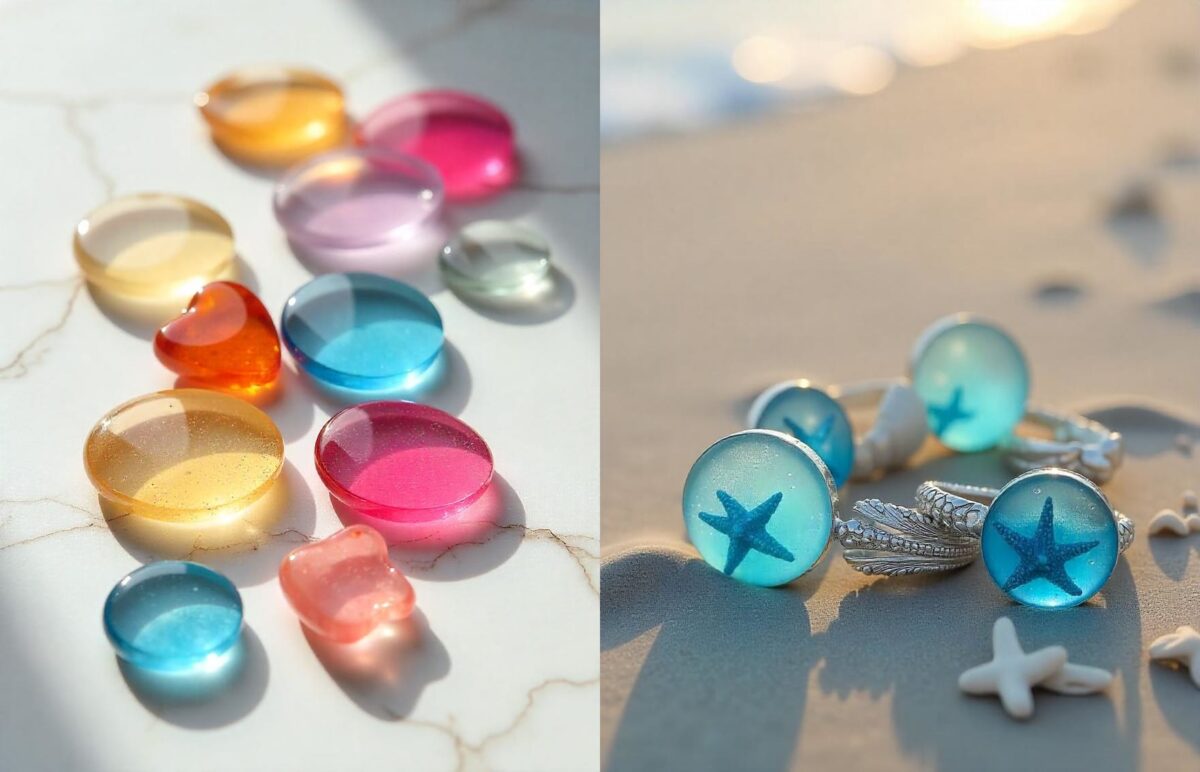
VI. Common Mistakes to Avoid When Making Resin Jewelry
Creating resin jewelry can be a fun and rewarding experience, but like any craft, it comes with its own set of challenges. To help you achieve the best results, here are some common mistakes to avoid when making resin jewelry:
Incorrect Resin Ratios
The main challenge when working with resin jewelry arises from improper mixing of its resin and hardener components. The two essential constituents of resin are the resin material and the activating hardener. The successful execution of resin jewelry depends on proper mixtures according to the manufacturer’s guidelines. Using excess resin or hardener will prevent your resin from completing its curing process, thus creating an unprofessional sticky or soft finish. The result of adding insufficient resin leads to fragile objects, whereas high resin levels produce weak bonding. Proper measurement of all materials will provide strength and durability to your finished pieces.
Rushing the Curing Process
Patience is key when working with resin jewelry. The curing process requires appropriate time because improper timing produces subpar results. After pouring your resin into molds for items like epoxy resin pendants or resin necklaces, allow sufficient time for the resin to set and harden completely. Excessive heat application on resin, together with premature handling, has the negative effect of rendering jewelry pieces unusable because the curing process fails to complete properly. Your resin needs a minimum of 24-48 hours to cure properly, based on the thickness of your design.
Overloading with Embellishments
While embellishments like resin charms for jewelry making can add a unique touch to your creations, it’s essential not to overload your pieces. Lots of decoration compromises both the design aesthetic and the curing process of resin by causing unevenness and cure-related difficulties. When creating resin jewelry, aim for a balanced design that allows each element to shine without overwhelming the piece. Minimalist design choices are most effective, so you should keep the design approach simplified for a sophisticated look.
Not Sealing Porous Items Before Embedding
If you’re embedding items such as keychain resin with words or resin fabric, it’s essential to seal porous items before embedding them in resin. Unsealed materials may absorb the resin, discolor, or weaken the final piece. Ideally, coat porous items with a sealant or varnish to ensure the integrity of colors is not affected, and the resin won’t react negatively. Sealing guarantees that your pieces remain vibrant and visually appealing, especially when creating intricate resin bracelets or resin bangles.
Skipping the Finishing Touch
The finishing detail represents the crucial component to achieve the perfect appearance of home-made resin jewelry. Most makers avoid finishing resin jewelry, yet proper sanding, along with polishing and finishing operations, will result in a professional-grade smooth finish. The finishing process addresses rough edges as well as imperfections in resin chains and resin bracelets to create a smooth, refined appearance. Executing this key step enables you to transform basic craftsmanship into wearable artwork with high-quality standards. Your resin jewelry skills and results will improve when you avoid typical missteps that enable you to create resilient artistic pieces showcasing both your personal touch and meticulous work. Pay attention to practice, and remember to enjoy the resin jewelry-making process.
This guide will also help you Resin Jewelry Making Guide for Beginners – Start-to-Finish

VII. Advanced Techniques for Creating Unique Resin Jewelry
Creating stunning and unique resin jewelry goes beyond the basics. Users interested in enhancing their designs to become innovative should try introducing advanced techniques into their creations. These methods can turn your resin jewelry into eye-catching pieces that stand out. Several engaging techniques exist for you to try.
Creating Gradient or Ombre Effects
One of the most sought-after effects in resin jewelry is the gradient or ombre look. The process of gradation combines two or more colors until they merge into a flowing transition, resulting in a visually beautiful outcome. To begin creating gradient looks, start by mixing different color resins. Add your pour colors one after the other into your mold, beginning with the lightest color and followed by progressively darker shades. People achieve blending effects through the natural mixing of colors, but it’s essential to maintain distinct color areas visible. Resin necklaces and resin bangles work particularly well for this technique, as the color transitions create a visually appealing pattern.
Embedding LED Lights or Glow Powder
For a truly unique and modern touch, try embedding LED lights or glow powder into your resin jewelry. This technique combines novelty with activity, providing interesting visual dynamics, particularly when viewed under low-light conditions. You can embed glow-in-the-dark powder into your resin pieces, such as epoxy resin pendants, for a striking effect that shines in the dark. To achieve futuristic illumination in your jewelry, you can encase small LED lights within resin. Resin jewelry with these features serves the purpose of standing out at evening gatherings and parties.
Making Shaker-Style Resin Jewelry
Shaker-style resin jewelry is a fun and playful design where small items or glitter are suspended in resin, allowing them to move around freely inside the jewelry. To make this type of jewelry, start by filling a mold with resin and adding items like resin charms for jewelry making, tiny beads, or glitter. Add another resin layer, which will preserve the embellishments after they have reached their initial filler point in the mold. After the curing process, the small elements inside the resin piece will produce motion that results in a dynamic design. This technique is ideal for creating resin keyrings or resin bangles, as the movement inside the piece adds a whimsical touch.
Using Gold/Silver Leaf for Luxury Aesthetics
For those seeking a more luxurious feel in their designs, incorporating gold or silver leaf into your resin jewelry is an excellent choice. The precious, thin metal sheets give a refined, stylish appearance to every design. Placing tiny pieces of gold leaf or silver leaf inside your resin mold prior to resin addition makes this technique possible. You can use it in pieces like resin bracelets or resin pendants to create a high-end, glamorous look. The metallic flakes maintain their floating position in the resin base to deliver noble, high-end characteristics that other materials cannot match.
Working with Resin on Bezels (Open Back Style)
An open-back bezel made from resin becomes an excellent choice for attaining an intricate professional appearance. Working with resin jewelry requires bezel setting to create an open-backed design. You can work with intricate resin fabric and key resin containing words toward your resin creation because this method leads to a finished clean edge. Resin necklaces and epoxy resin pendants benefit from open-backed bezels since they reveal the intricate front details alongside their open and intriguing back design. By experimenting with these advanced techniques, you can take your resin jewelry creations to the next level.
Whether you intend to be a professional designer or simply need to create designs for personal use, or if they will be sold, these techniques will enable everyone to produce many high-quality and unique designs that will certainly turn heads and make people appreciate your knowledge. Go ahead, tie a variety of techniques together, and create one-of-a-kind jewelry that is uniquely your own.
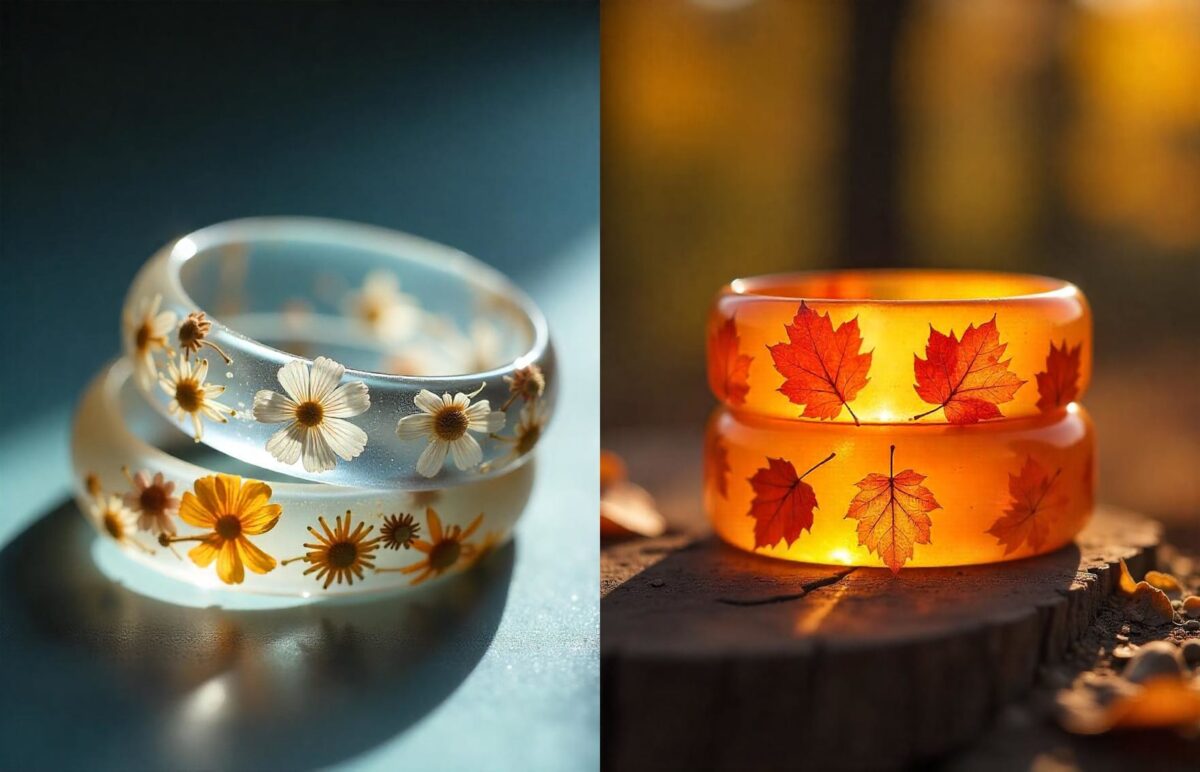
VIII. How to Sell Your Resin Jewelry
Creating unique resin jewelry is a rewarding craft, but the real magic happens when you take your creations to the market. Whether you are looking to share your passion with others or build a business, here are some tips to help you successfully sell your resin jewelry.
Branding Your Style
Branding plays a crucial role in making your resin jewelry stand out in a crowded market. When you create handmade resin jewelry, it’s essential to have a clear vision of your unique style. Your attraction to jewelry styles may lean towards either basic creations or shift towards bold and energetic pieces. The brand you establish should match your aesthetic taste and represent the jewelry items you seek to produce. Your pieces should have a brand name combined with a logo and specific color choices that enable immediate recognition by customers. This will help you build a loyal customer base who can easily identify your work, whether it’s resin necklaces or resin bangles.
Where to Sell: Etsy, Instagram, and Local Craft Fairs
At this stage, you must decide on the selling venue for your creative products. The following platforms offer choices for potential online selling:
- Etsy:A popular marketplace for handmade goods, Etsy is a great platform to sell your resin jewelry to a global audience. Start with a professional shop display and use great photos of your items to optimize your listings by using appropriate search terms.
- Instagram:The visual nature of Instagram provides the best space for displaying your jewelry designs to potential customers. Share images of your resin chains, epoxy resin pendants, or even behind-the-scenes glimpses of the jewelry-making process with resin. You should use both posting and stories to build digital connections with your audience while developing a following based on your work.
- Local Craft Fairs:If you prefer to interact with customers face-to-face, local craft fairs are a great place to sell your resin jewelry. These market events give you the chance to develop individual relationships with buyers and receive immediate responses regarding your designs. The direct sales opportunity enables you to establish better relationships with local customers who help create a solid local following for your business.
Photography Tips for Resin Jewelry
High-quality photography is essential for selling resin jewelry online. These strategies will assist you in photographing your resin jewelry pieces properly:
- Lighting:Proper lighting is crucial. Natural daylight or a lightbox should be used, as they help minimize harsh reflections and shadows. Lighting will help you showcase the intricate details of your resin necklace or resin bracelet.
- Background:A plain background should replace any clutter in your images. A clean white or neutral backdrop will make your resin jewelry the focal point of the image. The addition of wood and marble backgrounds brings interest to the jewelry without stealing the spotlight from it.
- Close-Up Shots: Capture the finer details of your pieces, such as the resin’s glossy finish or the colors in your resin fabric designs. By taking shots up close, you enable your target customers to better see and appreciate your workmanship and visual aesthetics.
Pricing Strategies and Packaging Ideas
The way products are priced, along with packaging methods, serves as essential tools to draw new clients and maintain current ones. Here’s how to ensure you’re pricing your resin jewelry appropriately and presenting it in a way that feels special:
- Pricing Strategies:You should research market values to find appropriate prices for your products. Take into account the cost of materials, such as resin charms for jewelry making, tools, and any additional embellishments you use. You should also consider the time spent manufacturing each item, as well as Etsy overhead if selling through their platform. The value of your handiwork should guide the price you set, which should be reasonable enough to compete in the market.
- Packaging:Packaging is more than just a way to protect your epoxy resin pendant during shipping; it’s an opportunity to create an experience for your customers. Before shipping your epoxy resin pendants, you should buy packaging that features your brand logo and matches your visual style. Include either sustainable materials or packaging boxes that display your logo as branding options. A simple gratitude note inserted with a fabric pouch inserted into your packaging design will create an unforgettable impression on your customers.
Selling your resin jewelry can be both fun and profitable. Your successful business starts from combining correct branding with exceptional photographs and proper pricing alongside the right platforms to execute your passion business idea. Don’t forget to showcase the unique qualities of your handmade resin jewelry and share your personal story to connect with your audience. It is essential to emphasize the artistic character of each piece when promoting your work, either online or during craft fairs, since this bond can lead to stronger customer relationships.
XI. Final Thoughts
Creating resin jewelry is an exciting and rewarding craft that allows you to showcase your creativity. Throughout all steps of familiarity with resin jewelry, there exist opportunities to discover new possibilities and develop skills in this artistic landscape. The following closing remarks will help guide you as you start your resin jewelry making experience.
Encouragement to Explore Creativity
The beauty of handmade resin jewelry lies in its versatility. Handmade resin jewelry presents unlimited choices for working with colors, textures, and designing. The boundaries of your creative endeavors should not constrain you while making resin necklaces and epoxy resin pendants, despite their diverse coloring and dimensional possibilities. Allow the world to inspire you to create, along with experimenting with mixing materials such as resin charms for jewelry making, while understanding that enjoying the creative journey makes all the difference.
Remind Readers That Mistakes Help in Learning
Making mistakes is a normal part of the learning journey, thus we must never hesitate to learn from our errors. When working with resin, your projects might face unexpected problems since the resin might not cure properly, which would result in pieces with different outcomes than your original ideas. The failure should never act as a deterring factor for you. Your learning process benefits from each error because it serves as a lesson to build your dexterity. With time, you’ll develop a deeper understanding of how to make jewelry with resin and how to fix common issues. Accepting visual tests and failed attempts will lead to your creative development as an artist.
Invite Them to Start with Small Projects and Evolve
Starting small is the key to mastering resin jewelry. The foundation for learning resin jewelry involves starting with basic projects such as resin bangles and resin pendants, while building up your skills. An advanced level of accomplishment allows you to begin working on intricate resin pieces, while developing abilities in special techniques, including glow-in-the-dark resin. Start with projects that match your comfort level and create a schedule that allows for the personal development of your techniques until you find your personalized style.
You will observe your learning progress because your final creations will demonstrate how much knowledge you have gained. So, whether you’re making resin chains for a friend or designing one-of-a-kind resin jewelry for your own collection, take pride in each piece you create. Maintaining curiosity, along with embracing learning and having fun with creative expression, will bring the best results. The world of resin jewelry is full of exciting possibilities—so dive in and let your imagination soar.
X. FAQs:
As you dive into the world of resin jewelry, you might have some questions along the way. To help you navigate the process with ease, we’ve answered a few common questions that come up when making handmade resin jewelry.
How long does it take for resin jewelry to cure?
The curing time for resin jewelry varies depending on the type of resin you use and the thickness of your piece. Resin takes approximately two to four hours to start hardening before reaching a solid state during the total 24 to 48 hours of its curing period. It’s essential to allow your resin necklace or resin bracelet to cure completely before handling to avoid any smudging or damage. The best outcome depends on giving resin the necessary time to cure, as fast progress during the process might result in flawed items.
Can I use natural materials like flowers or herbs?
Yes! Yes, you can definitely use natural materials like flowers, herbs, or even small leaves in your resin jewelry. These items add a beautiful, organic touch to pieces such as epoxy resin pendants or resin bangles. It is crucial to ensure that materials are completely dry prior to embedding them inside resin. The resin curing process will maintain its correct state due to the drying procedures, which prevent moisture from affecting the substance. Using dried flowers or herbs can add unique and nature-inspired elements to your resin designs.
What’s the best resin brand for beginners?
New resin users need to select materials that offer simplicity when working along with simple end results. A good starting point is a resin jewelry making kit, which typically includes resin, hardener, and molds that are ideal for beginner projects. Buy epoxy resin that remains transparent after mixing while being simple to blend and accompanied by user-friendly guidelines. Many well-known brands are designed to minimize bubbles and provide a smooth finish, which can help you make quality pieces like resin chain or resin charms for jewelry making.
How do I avoid bubbles in resin jewelry?
The process of minimizing bubbles from resin work requires multiple techniques.
- Mix slowly:One technique is to mix slowly: the correct method for combining resin with hardener includes slow hand movements that help preserve an air-free mixture quality.
- Use a heat source:Another technique is to use a heat source: heat treatment with either a heat gun or a torch should be applied after mold filling to pop potential bubbles. However, applied heat should be managed with caution to prevent damage to the resin.
- Avoid over-mixing:A third technique is to avoid over-mixing: when you blend resin at high intensity, bubbles will start to appear. Following the suggested blending period is essential, but make sure your resin gets well distributed before stopping the mixing process. These methods will help you create smooth, bubble-free pieces like resin bracelets or keyring resin.
By understanding and addressing these common questions, you can ensure a smoother and more enjoyable experience as you explore jewelry making with resin. A modest amount of practice will allow you to develop skill at making beautiful resin creations.
Simplified Summary
This article describes step by step guide about how to create unique Resin Jewelry. It also explains what material required. It also helps to know the advanced tips and techniques.
Share this content:

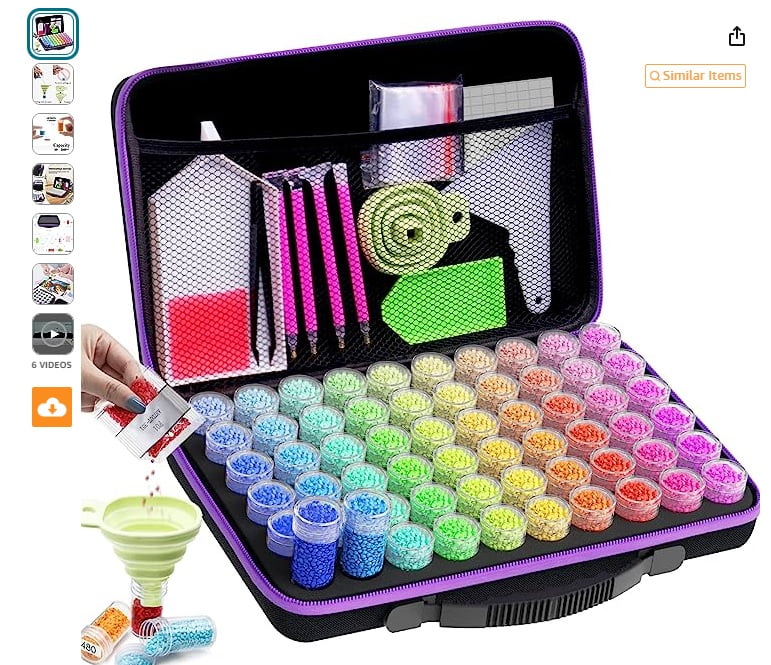
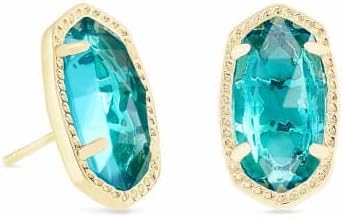



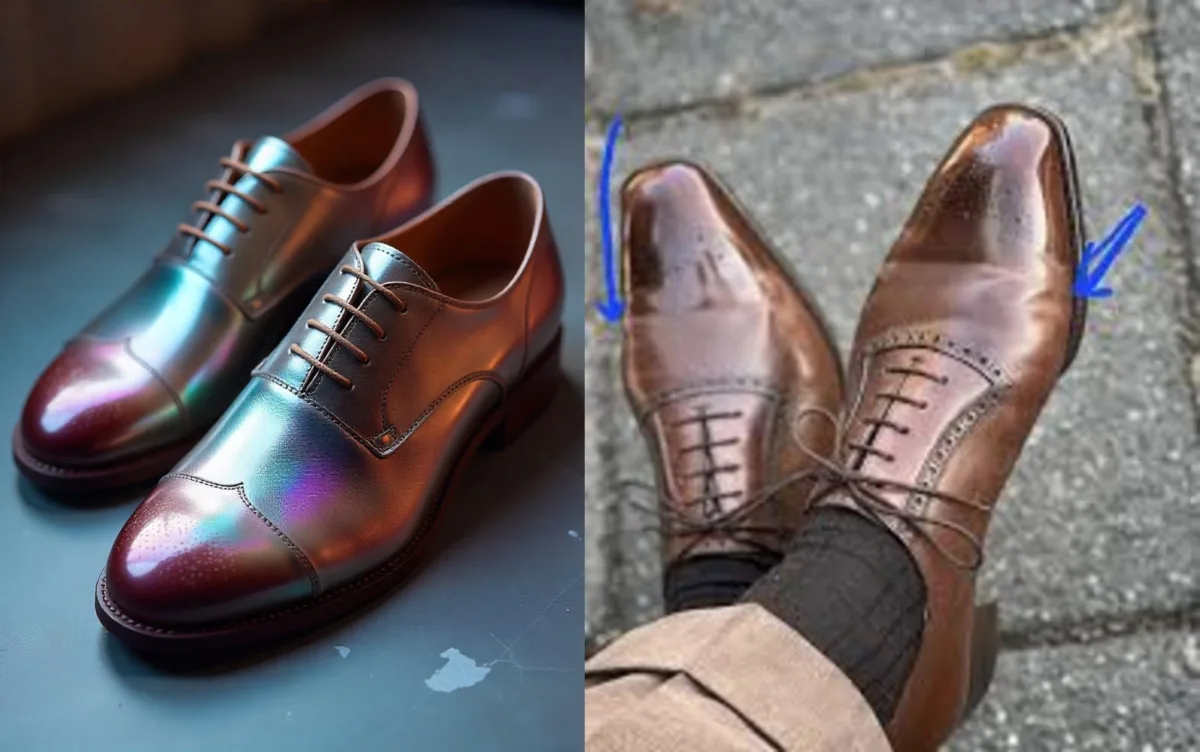
1 comment